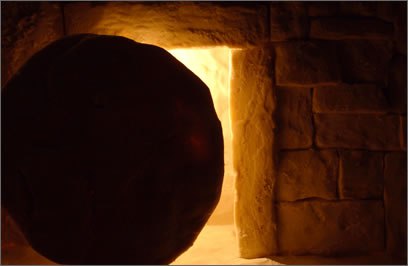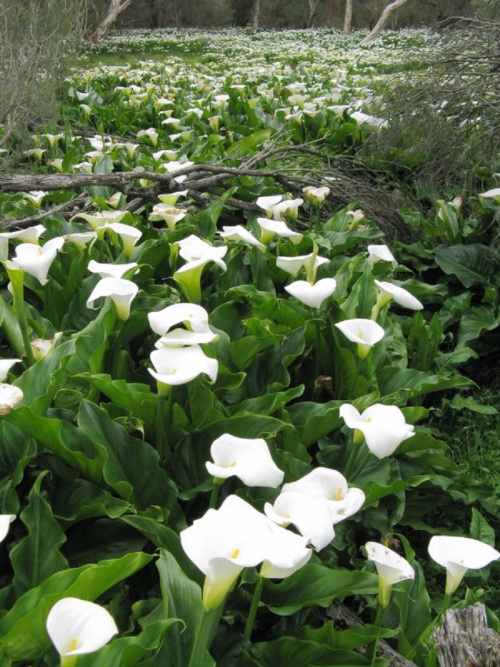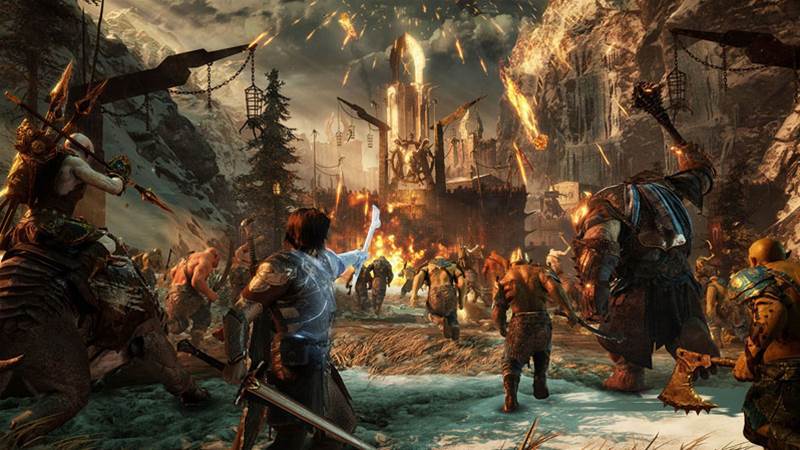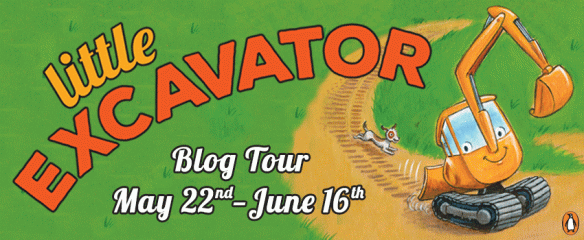It was very early on the first day of the week and still dark, when Mary of Magdala came to the tomb. She saw that the stone had been moved away from the tomb and came running to Simon Peter and the other disciple, the one whom Jesus loved.
“They have taken the Lord out of the tomb,” she said, “and we don’t know where they have put him.”
So Peter set out with the other disciple to go to the tomb. They…saw the linen cloths lying on the ground…and…believed. Till this moment they had still not understood the scripture, that he must rise from the dead.

Below is a reconstruction of what happened from the book The Truth About the Shroud of Turin (Regnery, 2010), pp. 189-191, by my friend Robert K. Wilcox. No matter how many times I read this, it never fails to move me to tears.
†The tomb, a rocky chamber carved out of a hillside, a stone rolled against the door, is dark and silent. Lying on a slab is a long, rectangular cocoon, the hills and valleys of which are clearly the contours of a human body. The body of Jesus lies there, face up, a ribbon around the head and chin to keep the mouth closed, packed on all sides with bags of spices.
At some unknown moment in the dead of night, the air in the tomb becomes electric.
At first the vibrations are minute, the sort that could be detected by sensitive twentieth-century instruments; then they dramatically increase until they shake the ground and blow the boulder from the door.
A glow, faint at first, emanating from the shroud suddenly intensifies until rays of light shoot through the threads, star-filled golden rays filling the tomb and pouring out the door.
For thirty seconds — no more — the blinding, pulsating movement continues.
The source of the activity is the corpse, the body, somehow being revitalized, dematerialized, its mass being converted into energy, pure energy, which in the material world is radiant white light.
The body rises from the slab through the cloth, hovers for a moment in midair, then disappears.
The cocoon collapses. Darkness returns. Shouts of “Earthquake! Earthquake!” diminish as the guards run for their lives. And in the air, the distinct odor of scorched linen.
When dawn comes, the women in Jesus’ life draw tentatively toward the tomb, look in the opening, and see the shroud unopened, still wrapped, but definitely deflated. The body is gone. At sunrise the disciples come. John enters the tomb, puts his hand on the cloth, and presses it to the slab. Jesus is there no longer. The disciples and the women quickly gather up the burial garments — the chin band is still in the shroud — and the spice bags and leave before the Romans can return.
At another time, in another place, when they have a chance to gather their wits, they will discover the figure of their master imprinted on the inside of the shroud. The images would be faint, probably not as dark as the passage of time and exposure to air have made them; and the images would be negative ones, a phenomenon that would also become clearer with the passage of time. Regardless, they would view these images as holy — imprints of their precious Lord. The disciples would pay more attention to the images on the shroud if they weren’t already waiting, with the greatest anticipation, for Jesus himself, who, before his death, had promised to visit them after he rose from the dead.

~Eowyn






